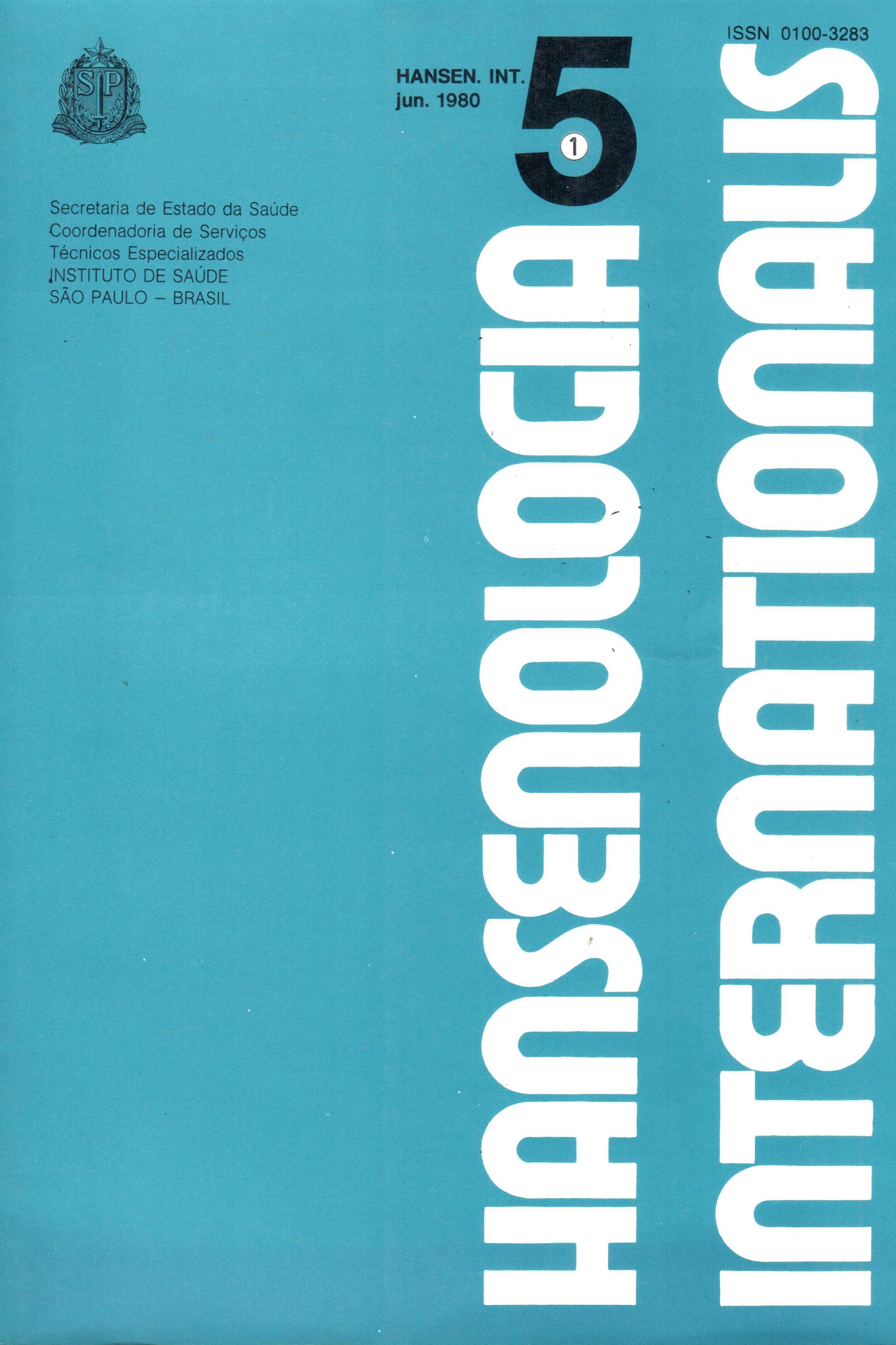Manutenção de tatus em cativeiro e resultados de inoculação do Mycobacterium Leprae
DOI:
https://doi.org/10.47878/hi.1980.v5.35616Palavras-chave:
Tatu, Mycobacterium leprae, InoculaçãoResumo
Os autores relatam sua experiência na manutenção de tatus em cativeiro e apresentam os resultados da inoculação do M. leprae. Inicialmente fazem considerações sobre a proveniência dos animais, como é processada sua captura e as tentativas que realizaram até conseguirem as instalações atuais para albergá-los. Relatam ainda as experiências feitas para a padronização de uma ração que fosse adequada e o resultado a que chegaram, que consiste de uma ração para frangos misturada a pão, ovos, carne e leite. Além disso, discorrem sobre o registro e o exame dos animais, que se constitui principalmente em um exame físico do animal na entrada, verificação do peso e temperatura retal e a realização de exame de fezes, hemograma e homossedimentação, e sobre como os animais são imobilizados para a colheita do sangue e para as inoculações. Finalmente, apresentam os seus resultados da inoculação do M. leprae em 3 animais da espécie Euphractus sexticinctus e em 26 animais da espécie Dasypus novemcinctus com referência especial a um D. novemcinctus (n.° 19) que apresentou infecção sistêmica após 15 meses de inoculação por via subcutânea e intravenosa. Bacilos foram encontrados em grande quantidade em vários órgãos como pele, linfonodos, fígado, supra-renais e baço. Não foram encontrados bacilos no miocárdio, pâncreas, tireóide e testículos. Ao que parece, este constitui o primeiro animal da espécie D. novemcinctus que apresentou infecção experimental sistêmica com o M. leprae na América do Sul. Um outro tatu (n.° 11), inoculado com suspensão de 1,2 x 10e bacilos por via intracardíaca, já apresenta nódulos com bacilos na parede abdominal após 10 meses de inoculação. Concluem considerando que os resultados já conseguidos darão em breve condições para fornecerem material para as instituições existentes no País ou outras que se interessarem no estudo do M. leprae e para o preparo de antígeno de Missuda tão carente nos programas de controle de hanseníase.
Downloads
Referências
CONVIT, J. et al. Leprosy in the armadillo: clinical and pathological aspects. Washington, DC Pan American Health Organization, 1978.
KIRCHHEIMER, W.F. Significance of nine banded armadillo in biomedical leprosy research. Lepr. India, 48(4) :4619-427, 1976.
KIRCHHEIMER, W.F. & STORRS, E.E. Attempts to establish the armadillo (Dasypus novemcinctus Linn.) as a model for the study of leprosy. I. Report of lepromatoid leprosy in an experimentally infected armadillo. Int. J. Lepr., 39(3) :693-702, 1971.
KIRCHHEIMER, W.F.; STORRS, E.E.; BINFORD, C.H. Attempts to establish the armadillo (Dasypus novemcintus Linn.) as a model for the study of leprosy. II. Histopatologic and bacteriologic post-mortem findings in lepromatoid leprosy in the armadillo. Int. J. Lepr., 40(3) :229-242, 1972.
MEYERS, W.M.; KVERNES, S.; BINFORD, C.H. Comparison of reactions to human and armadillo lepromins in leprosy. Int. J. Pepr., 43(3) :218-225, 1975.
STORRS, E.E. The nine banded armadillo: a model for leprosy and other biomedical research. Int. J. Lepr., 39 (3) :703-714, 1971.
STORRS, E.E. & GREER, W.E. Maintenance and husbandry of armadillo colonies. Lab. Anim. Sci., 23:823-829, 1973 spud Int. J. Lepr., 42(4) :489, 1974.
WORLD HEALTH ORGANIZATION. The armadillo as an experimental model in biomedical research. Washington, D.C., Pan American Health Organization, 1978. (PARO. Scientific Publication, n. 366).
Downloads
Publicado
Como Citar
Edição
Seção
Licença
Este periódico está licenciado sob uma Creative Commons Attribution 4.0 International License.



























